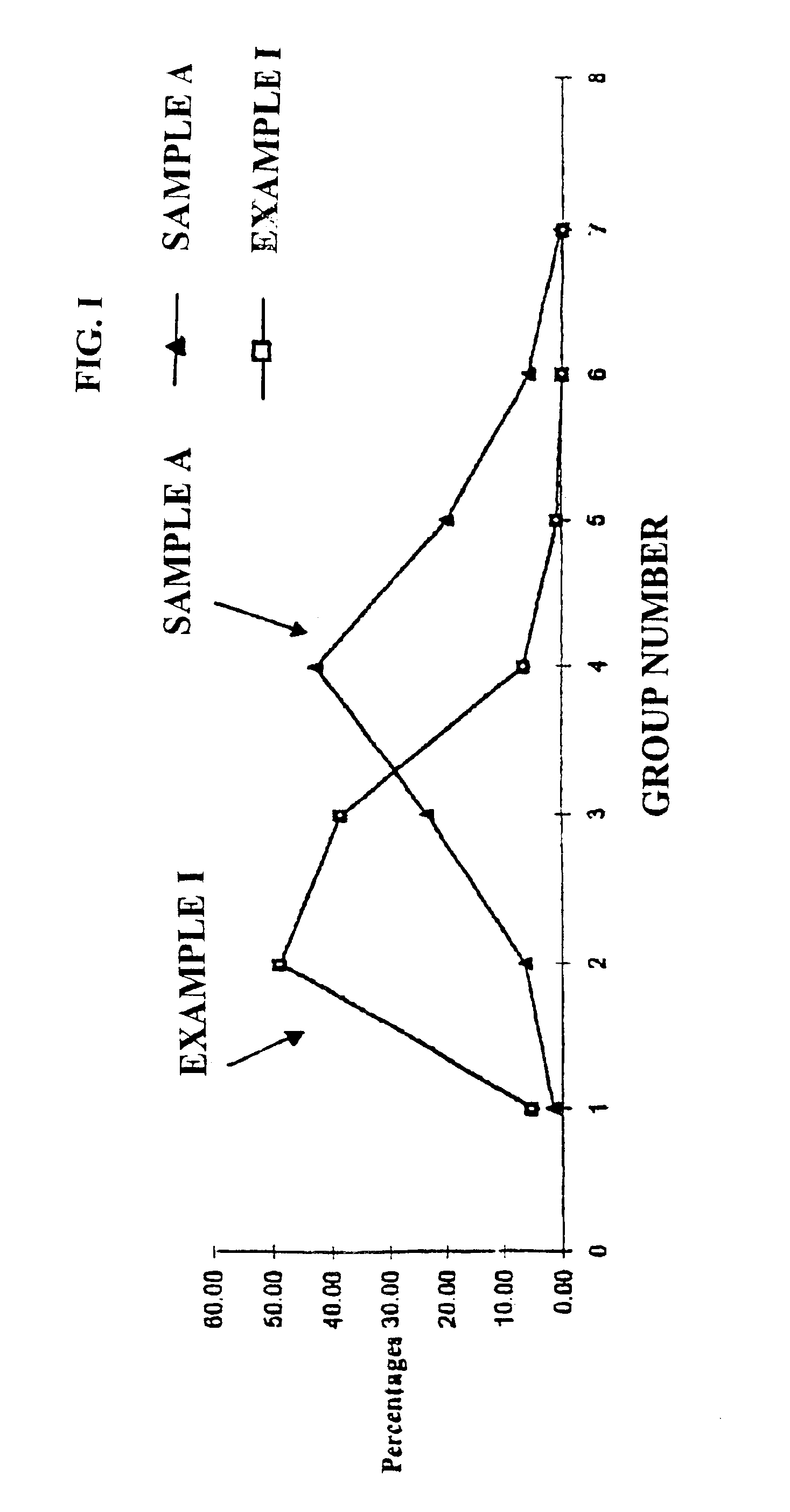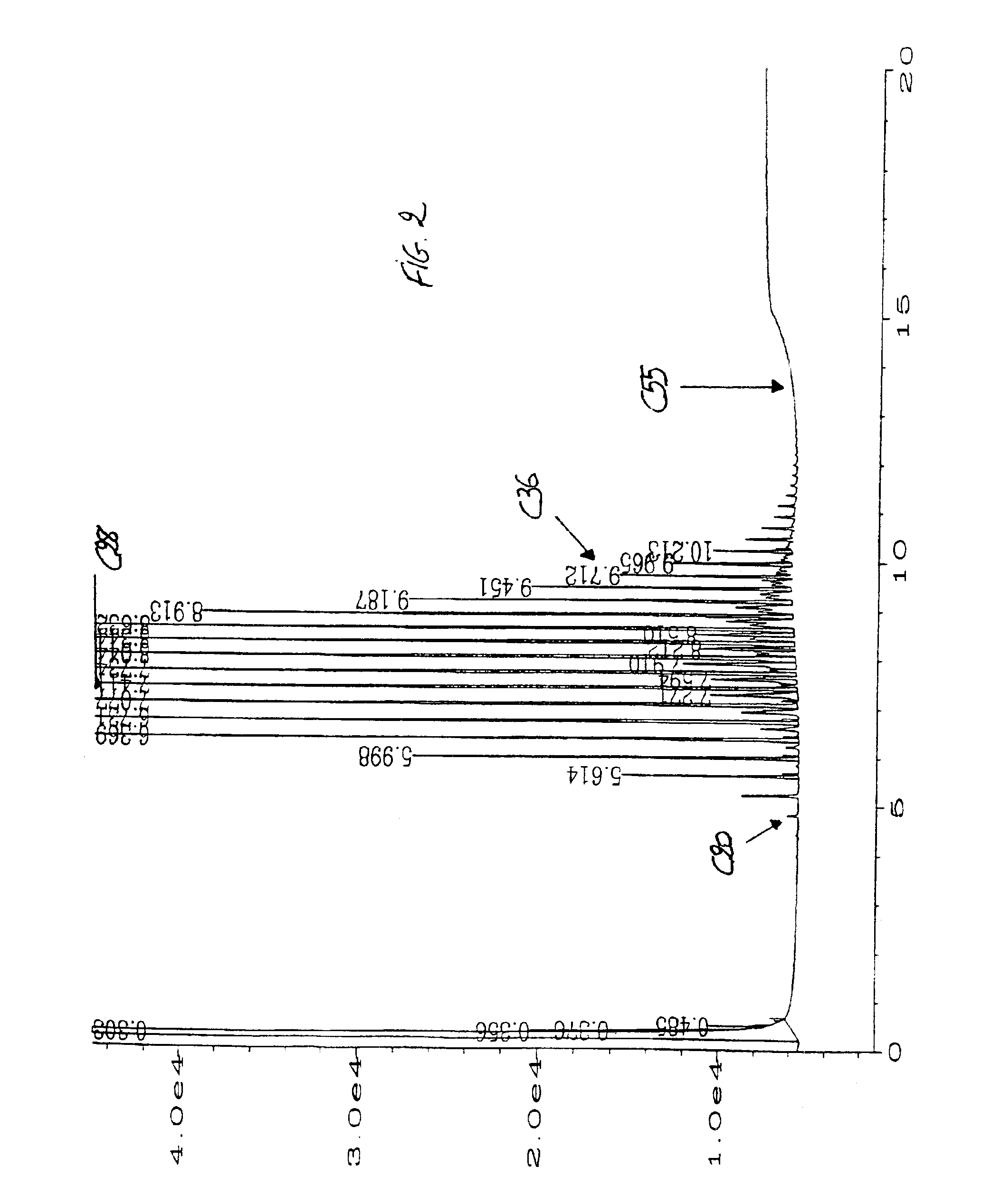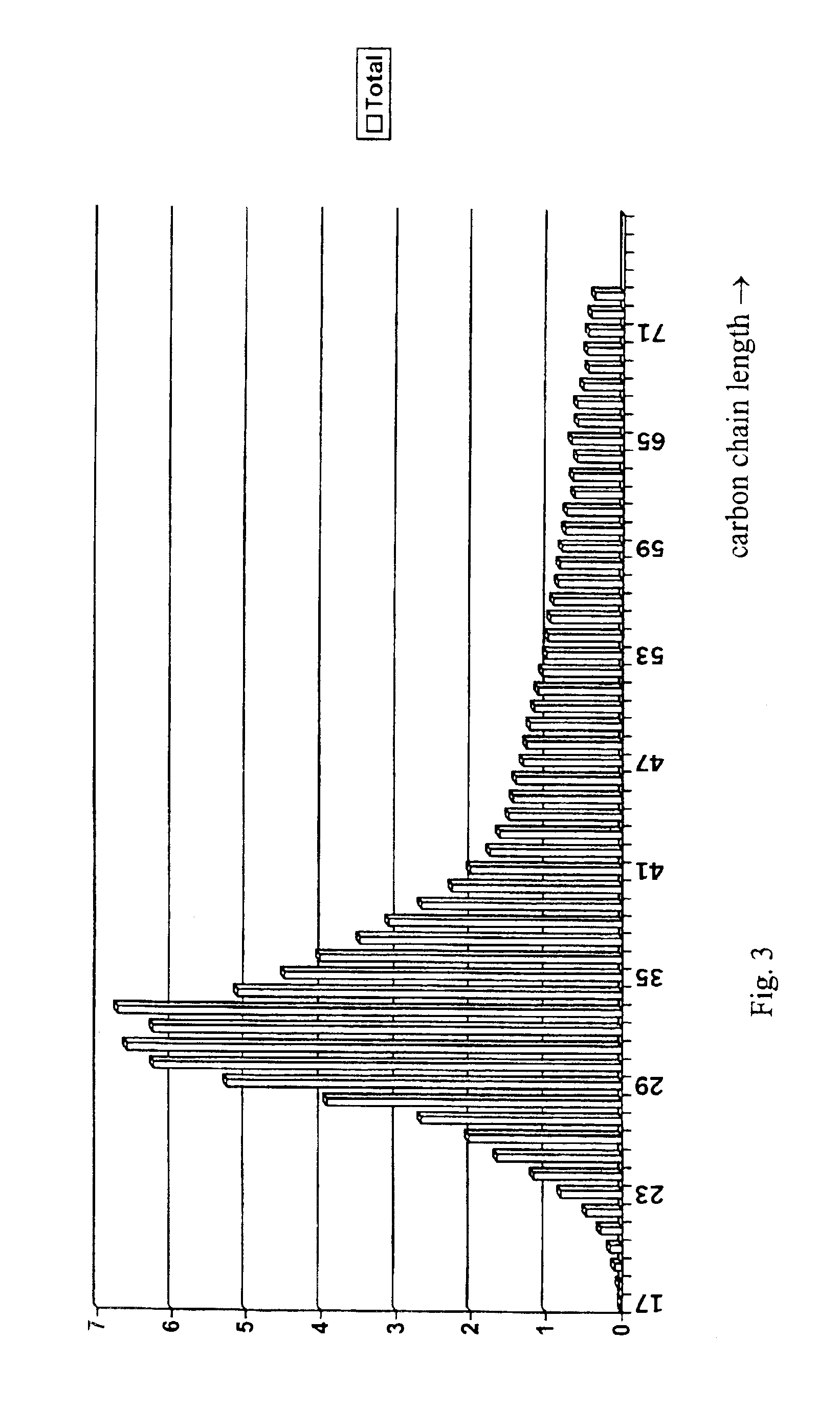Cushioning wax beads for making solid shaped articles
a technology of cushioning wax beads and solid shaped objects, which is applied in the direction of pharmaceutical non-active ingredients, packaged goods types, special packaging, etc., can solve the problems of unsuitable for the incorporation of controlled-release coated pellets, chewable tablets are not ideal for young children and older people, and are not suitable for chewable tablets. , to achieve the effect of rapid generation of viscosity, high tensile strength and sustained delivery
- Summary
- Abstract
- Description
- Claims
- Application Information
AI Technical Summary
Benefits of technology
Problems solved by technology
Method used
Image
Examples
example 1
Specifications of Microcrystalline Hydrocarbon Wax Suitable for Making Cushioning Beads
[0101]A refined pharmaceutical grade of microcrystalline hydrocarbon wax meeting the requirements for making cushioning beads is commercially available from Paramelt N.V. (Heerhugowaard, Netherlands). Its main physical characteristics are as follows:[0102]congealing point (DIN ISO 2207): 58-62° C.[0103]penetration (DIN 51579): 10-14 1 / 10 mm[0104]melting point (ASTM D 3945): 59-63° C.[0105]refractive index: 1.422-1.426[0106]dynamic viscosity at 98.9° C. (DIN 52007-2): 3-4.5 mPa.s
[0107]A representative sample of this microcrystalline hydrocarbon wax was analyzed by gas chromatography, resulting in the chromatograph output given in FIG. 2. This includes a series of well spaced peaks, the distance between two peaks being related to a difference by one atom in the hydrocarbon chain length. The distribution of carbon chain lengths in FIG. 2 shows a nearly symmetrical form around a peak of 28-29 carbon a...
example 2
Manufacturing of Cushioning Beads Comprising Microcrystalline Hydrocarbon Wax
[0115]Blending of a mixture comprising:[0116]Microcrystalline hydrocarbon wax of example 1 12.5 kg[0117]Drum duid corn starch (Cerestar, Vilvoorde, Belgium) 8.35 kg[0118]sodium starch glycolate Explotab® (Barentz, Zaventem,[0119]Belgium) as a disintegrating agent: 4.15 kg
is performed in a high shear mixer (Vactron 75, GEI Collette, Wommelgem, Belgium). The different ingredients are mixed in the mixing bowl and next head. The temperate of the jacketed bowl is set at 70° C. and the powder mixture is homogenised during 35 minutes, after which time the mixture is becoming plastic and the temperature of the mixture is 58° C. During heating and homogenisation of the powder, the mixing arm is set at 100 rpm. Next the cooling phase is started by adding 1 kg CO2 pellets and the mixing and chopper arms are set at 200 rpm. Some more C2 pellets are added up to a total amount of 25 kg. After 15 minutes mixing time, the ...
example 3
Production of Tablets Comprising Microcrystalline Hydrocarbon Wax Cushioning Beads
[0120]Round flat tablets (13 mm) containing diltiazem a calcium channel blocker with coronary vasodilating activity falling in the therapeutic categories of antianginals, antihypertensives and antiarrhythmics, as the biologically active ingredient are produced using the following composition:[0121]Diltiazem coated pellets 57.90%[0122]Cushioning beads of example 2 38.6%[0123]Explotab® 2.5%[0124]Lubritab® 1.0%
[0125]The above mixture is first homogeinized during 10 minutes and then compacted by means of an excentric tabletting machine while filling the matrix hole with 800 mg of the said mixture, thus achieving an initial compaction pressure of 500 kg. Thanks to the use of Lubritab®, a hydrogenated oil, as a lubricant in the above formulation, it was possible to prevent adhesion of the resulting tablet to the compacting machine and consequently to avoid damage to the tablet during its ejection from the sa...
PUM
| Property | Measurement | Unit |
|---|---|---|
| size | aaaaa | aaaaa |
| particle size | aaaaa | aaaaa |
| volume | aaaaa | aaaaa |
Abstract
Description
Claims
Application Information
 Login to View More
Login to View More - R&D
- Intellectual Property
- Life Sciences
- Materials
- Tech Scout
- Unparalleled Data Quality
- Higher Quality Content
- 60% Fewer Hallucinations
Browse by: Latest US Patents, China's latest patents, Technical Efficacy Thesaurus, Application Domain, Technology Topic, Popular Technical Reports.
© 2025 PatSnap. All rights reserved.Legal|Privacy policy|Modern Slavery Act Transparency Statement|Sitemap|About US| Contact US: help@patsnap.com



